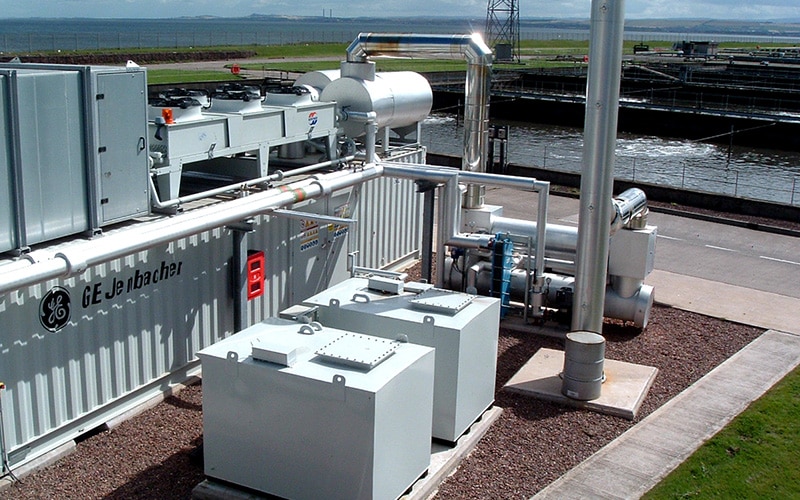The versatility of Jenbacher gas engines has been demonstrated again at the new multi-million pound waste water treatment works at Seafield in Edinburgh, where methane gas from processed sewage is being used in a combined heat and power (CHP) installation. The scope of the work, as defined by MJ Gleeson Group PLC, for Stirling Water, comprised the design, supply, installation, testing and commissioning of a CHP generating set, as well as a power management system.
Clarke Energy’s Jenbacher generators can run off a quality of methane that would otherwise cause other gaspowered sets to fail. They are sufficiently robust to withstand the hostile properties of biogas, in particularly the hydrogen sulphide (in this instance up to 2000ppm) and have a sophisticated carburation system which makes them particularly adept at handling the variations in quality experienced in biogas applications.

For this installation, the engine was configured to run off a dual-fuel source, biogas and natural gas supply. The Jenbacher 612 used is rated at 1.3 MW (electrical) and 1.5 MW (thermal), which makes up a portion of the normal process power demand of 3.5 MW. However, the installed generation capacity is actually 4.2 MW, when the stand-by diesel generator is online. This 2.9MW unit was supplied as an emergency power supply and for use in peak-lopping situations, where it will work in conjunction with the power management system supplied by Clarke Energy.
The importing of electricity during triads is reduced thanks to the power management system meaning that the electricity costs are minimised during peak periods. With a biogas operation such as Seafield, energy efficiency can be maximised by the use of the methane produced when the sewage sludge is digested. It is utilised to power the CHP generator, this in turn provides electricity for the site and the hot water that can be passed through a heat exchanger, to assist the digestion The project, which was delivered on time and without any extra contracted work needed, was initially tested just eight months after the order was placed. January 2001 The success of the Clarke Energy tender in Seafield follows a similar Biogas installation at Hogsmill, at Kingston Upon Thames. Jointly designed by Thames Water and built by Kvaerner Water, it was created to serve nearly 350,000 people.
The site is the largest to be built by Thames Water in the last 30 years. The smaller Jenbacher 212 engines were utilised in this case, but they still benefit from the same advantages of running efficiently on methane levels of around only 30% for a biogas operation.




